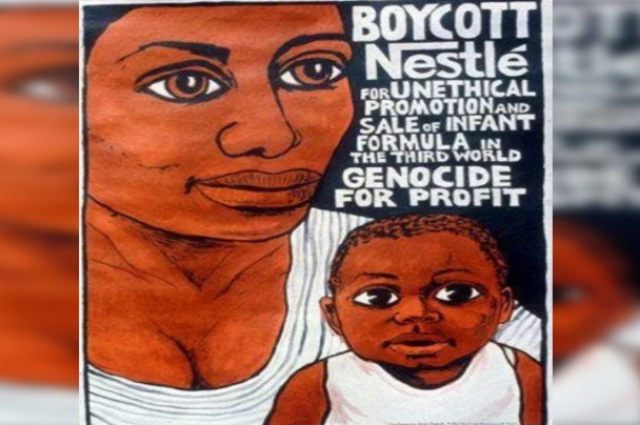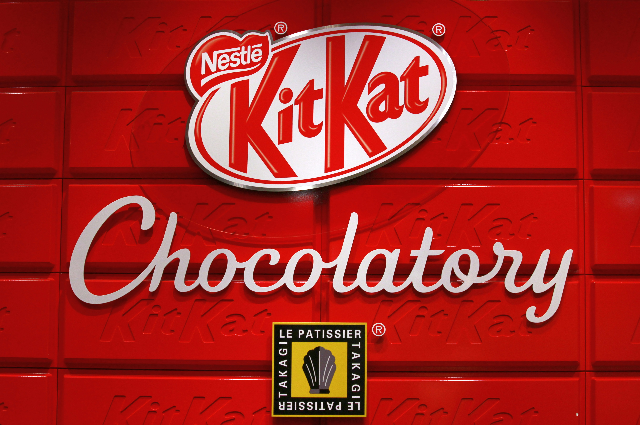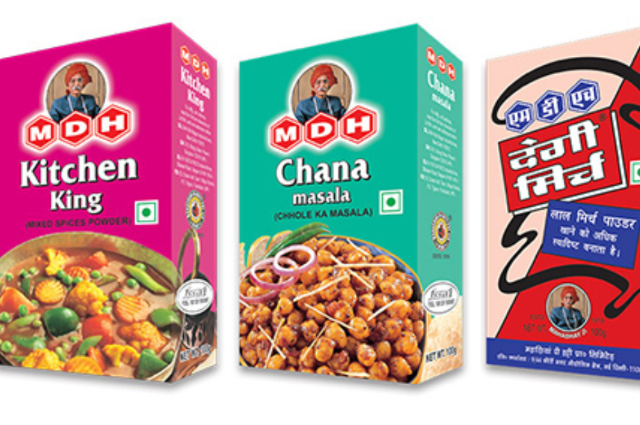Introduction
MDH Masala, founded in 1919 by Mahashay Chunni Lal Gulati in Sialkot, now in Pakistan, stands as a hallmark in the Indian spice market, with its full name translating to 'Respected man's shop' [1]. While on the global front, Nestle, established in 1866, dominates as a Swiss multinational food and drink processing conglomerate, showcasing the heritage and expansion of food brands beyond borders [2]. These brands not only capture the essence of traditional and modern cuisine but have also significantly impacted the food industry, reflected through MDH's impressive 15% revenue jump to Rs 924 crore and a 24% increase in net profit at Rs 213 crore, revealing the competitive yet flourishing nature of the masala segment in India [1].
Delving into the dark reality of these giants, this article aims to uncover the intricate layers behind MDH Masala and Nestle's operations, focusing on the controversies and health implications associated with their products. From the environmental concerns to the legal battles shaping public perception, a comprehensive analysis is essential to understand the standards set by MDH and Nestle compared to industry benchmarks. This examination promises to unfold the complexities, steering the discourse towards a future outlook that may redefine consumer trust and sustainability in the food industry [1][2].
The Historical Context of MDH and Nestle

MDH Masala, a name synonymous with quality spices in India and beyond, was founded in 1919 by Mahashay Chunnilal Gulati in Sialkot, which is now part of Pakistan. The origins of MDH (Mahashian Di Hatti) are humble, beginning as a small shop specializing in ground spices. This modest beginning laid the foundation for what would become a major player in the global spice market [4][5].
Following the partition of India in 1947, the Gulati family relocated to India. It was here that Dharampal Gulati, the son of Mahashay Chunnilal, re-established the spice business. This move marked a new beginning for the family's venture, setting the stage for future growth and expansion [4].
Today, MDH has grown to command a significant presence in the international market, exporting its products to a diverse array of countries including the USA, Canada, the UK, various European nations, South East Asia, Japan, the UAE, and Saudi Arabia. This extensive distribution network highlights MDH's global appeal and the universal love for authentic Indian flavors [3].
In terms of financial success, MDH and Everest, another prominent Indian spice brand, have collectively reported standalone revenues exceeding Rs 2000 crore in recent financial years. Everest, complementing MDH's market reach, exports its products to over 65 countries, further emphasizing the global impact and reach of Indian spice brands [3].
These historical and financial insights into MDH Masala not only underscore its significant role in the spice industry but also highlight the cultural and economic exchange facilitated through the global spice trade.
Accusations and Controversies

Nestle's Marketing Practices and Health Concerns
Nestle faced significant backlash in 1974 for its aggressive marketing strategies, where it targeted vulnerable populations in developing countries by promoting infant formula over breastfeeding. This led to accusations of exploiting the lack of knowledge and resources among mothers, persuading them to switch to formula feeding despite the associated risks [2]. Furthermore,
Nestle's products, including the Cerelac baby food, have been criticized for high sugar content in India, which contrasts with their lower sugar formulations in European markets [41][42]. This discrepancy has raised concerns about the impact on childhood obesity and diabetes [15].
Pesticide Contamination in MDH and Everest Products
MDH and Everest, two prominent Indian spice brands, have been embroiled in controversies regarding pesticide contamination. The Center for Food Safety in Hong Kong detected ethylene oxide—a prohibited pesticide—in several products including MDH's Madras Curry Powder and Everest's Fish Curry Masala, leading to product withdrawals in Hong Kong and Singapore [6][9]. This issue was compounded when similar findings prompted recalls in the U.S. for salmonella and pesticide contamination in 2019 [7]. The repeated occurrences of such incidents suggest potential systemic issues within the companies' quality control measures [11].
Regulatory Actions and Consumer Safety
The Food Safety and Standards Authority of India (FSSAI) has taken a proactive stance by ordering a detailed probe into all spice brands in India, including MDH and Everest, following these international incidents. This investigation aims to ensure compliance with Indian quality standards and assess the presence of ethylene oxide and other harmful substances [8]. Additionally, the U.S. Food and Drug Administration and Indian food safety authorities have been vigilant, mandating the withdrawal of contaminated products and conducting further quality checks [7][9].
Shareholder and NGO Responses to Corporate Practices
Nestle's shareholders recently faced a pivotal decision regarding the proposal by ShareAction, an investment NGO, which urged the company to reduce the sales of high-sugar, salt, and fat products. Despite only 11% support for the proposal, it highlights ongoing concerns about Nestle's product health profiles and their impact on global health issues [10]. ShareAction criticized Nestle for not adhering to internationally accepted standards for defining healthy food, advocating for a strategic shift towards healthier products [10].
These controversies and accusations underscore the challenges faced by global food companies in maintaining product safety, adhering to ethical marketing practices, and addressing public health concerns. The ongoing scrutiny from regulators and the public demands a higher level of accountability and transparency from these corporations to safeguard consumer interests and health.
Health Impacts Associated with Products

Ethylene Oxide and Its Health Risks
Ethylene oxide, classified as a Group 1 carcinogen by the International Agency for Research on Cancer, is known for its severe health implications including an increased risk of breast cancer [8]. This chemical, often used as a fumigant for food and spices to prevent microbial contamination, possesses DNA damaging abilities, making it genotoxic [18]
The carcinogenic nature of ethylene oxide is highlighted by its ability to form adducts with DNA, leading to mutations that could initiate cancer [6]. Furthermore, it can cause other genetic damages such as chromosomal aberrations [6]. Prolonged exposure to ethylene oxide may lead to severe health issues including cancer, reproductive disorders, and neurological effects [19].
Impact of High Sugar Content in Food Products
The high sugar content in certain food products has been linked to several health problems, including heart disease, diabetes, and obesity [11]. Nestle, in particular, faced criticism for the high sugar content in its products sold in India, which is significantly less in products sold in developed countries [11]. This disparity has raised concerns about the impact on health due to added sugars. Nestle has emphasized personal responsibility in making healthy choices, stating that individuals should be able to enjoy indulgent products in moderation [10]. However, the Food Safety and Standards Authority of India (FSSAI) is investigating allegations of Nestle selling baby food products with higher sugar content in India, reflecting ongoing concerns about dietary health impacts [21].
Controversies Over Contaminated Spices
MDH Masala faced significant controversy when harmful pesticide Ethylene Oxide was detected in several of its products by authorities in Hong Kong, leading to the withdrawal of four MDH spice blends from the markets in Hong Kong [11]. Similarly, Nestle's Maggi noodles came under fire for unacceptable levels of MSG and lead, leading to the withdrawal of 38,000 tonnes of Maggi noodles from retail shelves and their destruction [14]. These incidents underscore the challenges faced by global food companies in maintaining product safety and adhering to ethical marketing practices.
Authorities have advised consumers to avoid using the affected products and seek medical advice if they have consumed them, highlighting the serious health risks posed by these contaminants [20].
Environmental Concerns and Sustainability Practices

Nestle has outlined a comprehensive strategy focused on environmental sustainability and ethical practices. A key part of their commitment is achieving net zero emissions and ensuring deforestation-free supply chains. They aim to accomplish this through advancing regenerative agriculture at scale, with 13.58% of their key ingredients already sourced from farmers employing these practices [22].
Regenerative Agriculture and Greenhouse Gas Reduction
Nestle's efforts in promoting regenerative agriculture are crucial for sustainable food systems. As of 2023, they have achieved an 8.58% reduction in greenhouse gas emissions compared to their 2018 baseline. This progress is part of their broader goal to enhance biodiversity and reduce environmental impact across all operations [22].
Water Stewardship and Packaging Innovations
The company is also focused on improving water stewardship and developing innovative packaging solutions to enhance their end-of-life options. By 2025, Nestle aims to certify all its water sites according to the Alliance for Water Stewardship (AWS) Standard. Their ambition extends to ensuring that none of their packaging ends up in landfill or as litter, highlighting their commitment to a circular economy [22].
Sustainable Sourcing and Employee Well-being
Nestle is dedicated to achieving 100% deforestation-free primary supply chains by 2025 for key commodities like meat, palm oil, and sugar, and extends this goal to coffee and cocoa. They also emphasize creating a diverse and inclusive workforce, aiming for all key ingredient volumes to be responsibly sourced. This approach not only supports environmental sustainability but also fosters community well-being and supports a just transition to sustainable agricultural practices [22].
Transparent Reporting and Consumer Engagement
Transparency is a cornerstone of Nestle’s strategy. They have committed to public reporting on their activities, commitments, and performance. This openness is intended to build trust and inspire industry-wide changes towards more sustainable practices. Additionally, Nestle integrates environmental considerations into their product life cycles, focusing on efficient use of natural resources, reducing air emissions, and promoting zero waste initiatives [22][23].
Through these multifaceted efforts, Nestle not only aims to mitigate their environmental impact but also to lead by example in the transition towards a regenerative and sustainable food system [22][23].
Legal Battles and Public Perception
The legal entanglements and public scrutiny surrounding Nestle and MDH Masala have intensified over the years, reflecting broader concerns about corporate accountability and consumer safety in the food industry. The ongoing legal battles and the evolving public perception of these corporations are pivotal in understanding their impact on consumer trust and regulatory frameworks.
Legal Challenges Facing Nestle and MDH
- Class Action Suit Against Nestle: In a significant legal development, the Supreme Court of India has allowed the National Consumer Disputes Redressal Commission (NCDRC) to proceed with a class action suit against Nestle India. This lawsuit, initiated by the Central government in 2015, seeks to address alleged misleading claims and potential health risks associated with the company's products [24].
- Government Claims for Compensation: The Central government's lawsuit against Nestle also involves a substantial claim for compensation, amounting to Rs 640 crore. This claim represents the interests of numerous consumers, underscoring the scale of the alleged impact [24].
- Clean Chit from CFTRI: Despite the controversies, Nestle has received some backing from scientific reports. A lab report from the Central Food Technology Research Institute Laboratory (CFTRI) has provided Nestle with a clean chit concerning the lead and MSG content in its noodles, which plays a crucial role in the ongoing legal proceedings [24].
Public Perception and Regulatory Scrutiny
- FDA and FSSAI Oversight: The Food and Drug Administration (FDA) in the US and the Food Safety and Standards Authority of India (FSSAI) have been under the spotlight for their roles in ensuring food safety. Both regulatory bodies have faced criticism for their handling of the controversies involving Nestle and MDH, highlighting the challenges in managing global food safety standards [12].
- Investigation of Quality Standards: Following reports of contamination, FSSAI has stepped up its efforts to check the quality standards of MDH and Everest, another prominent spice brand. This increased scrutiny aims to ensure compliance with safety regulations and maintain consumer trust in these well-known brands [7] .
- Data Collection and Root Cause Analysis: In response to international concerns, India's Spices Board has begun collecting data on exports of MDH and Everest from authorities in Hong Kong and Singapore. This initiative is part of a broader effort to identify the root cause of the quality issues and implement necessary corrective measures [7].
These legal and public challenges highlight the critical importance of transparency and accountability in the food industry. They also emphasize the need for consumers to stay informed and vigilant about the products they consume, as decisions made by food industry giants like Nestle and MDH have far-reaching impacts on our dietary habits and health [11].
Comparison with Industry Standards
MDH Masala and Everest, prominent brands in the spice industry, have faced significant scrutiny regarding their adherence to quality standards, particularly after incidents of pesticide contamination. The Food Safety and Standards Authority of India (FSSAI) has been actively involved in assessing these standards through various measures [7][8].
Quality Standards and Regulatory Compliance
- Nationwide Sampling and Testing: FSSAI has initiated a nationwide drive to sample and test spices and infant nutrition products. This proactive approach aims to ensure that all products sold within India meet the required safety and quality standards [21].
- Data Collection from International Markets: The Indian Spices Board is collaborating with authorities in Hong Kong and Singapore to gather data on exports from MDH and Everest. This step is crucial for understanding the full scope of the quality issues and ensuring that exported products comply with international safety standards [7].
- Random Sampling Procedures: Part of the FSSAI's strategy includes random sampling of spice products in the market. This method helps in unbiased quality checking and ensures that the products consistently meet the set standards [8].
Challenges in Pesticide Regulation
- Enforcement Difficulties: Monitoring pesticide use at the farm level poses significant challenges due to the vast number of small-scale operations and the technical difficulties in tracking all activities [8].
- Vendor Monitoring: Both MDH and Everest are required to monitor their quality chain and manage their vendors effectively to control and prevent pesticide contamination. This is essential for maintaining consumer trust and complying with both national and international quality standards [8].
Comparison with Global Standards
- Responsibility of Importing Countries: While FSSAI regulates the domestic market, the responsibility for conducting quality checks on imports lies with the importing countries. This dual approach ensures that products meet the specific standards required in different markets [8].
- Public Health Impact: The recent focus on increasing the sales of nutritious products by Nestle, with a target to boost these sales by 50% by 2030, reflects a growing industry trend towards healthier food options. However, concerns remain about whether these targets are sufficient to influence significant changes in consumer diets and public health [10].
These efforts and challenges highlight the complex landscape of food safety and quality control within the spice industry. MDH Masala and Everest, as major players, continue to adapt their practices to meet both national and international expectations, aiming to restore and maintain consumer confidence in their products.
Conclusion and Future Outlook
Through the intricate exploration of MDH Masala and Nestle’s operations, controversies, and broader implications on health, sustainability, and quality standards, this article has illuminated the complexities underlying their global presence and impact. The exploration has meticulously highlighted issues such as pesticide contamination in spices, ethical marketing practices, the significance of environmental sustainability efforts, and the ongoing challenge of aligning with health and safety regulations worldwide. These discussions underscore the critical balance between consumer trust, corporate accountability, and the imperative towards more sustainable and ethical food production practices.
As these industry giants navigate the scrutiny of regulatory bodies and the expectations of consumers, the broader implications for the food industry are clear. The drive towards sustainability, transparency in ingredient sourcing, and adherence to health standards not only shapes public perception but sets a precedent for the global market. This comprehensive examination invites further reflection on the strategies employed by food corporations to address these challenges, underscoring the importance of continued vigilance and research in safeguarding consumer interests and pushing for industry-wide improvements in health, safety, and environmental stewardship.
. . .
References:
- https://www.quora.com
- https://www.youtube.com
- https://business.outlookindia.com
- https://en.wikipedia.org
- https://www.storyboard18.com
- https://www.livemint.com
- https://m.economictimes.com
- https://www.cnbctv18.com
- https://www.forbesindia.com
- https://m.economictimes.com
- https://www.youtube.com
- https://www.freepressjournal.in
- https://m.economictimes.com
- https://www.hindustantimes.com
- https://www.linkedin.com
- https://www.youtube.com
- https://www.forbesindia.com
- https://www.youtube.com
- https://timesofindia.indiatimes.com
- https://www.livemint.com
- https://www.businesstoday.in
- https://www.nestle.com
- https://www.nestle.com
- https://m.economictimes.com
- https://www.linkedin.com

